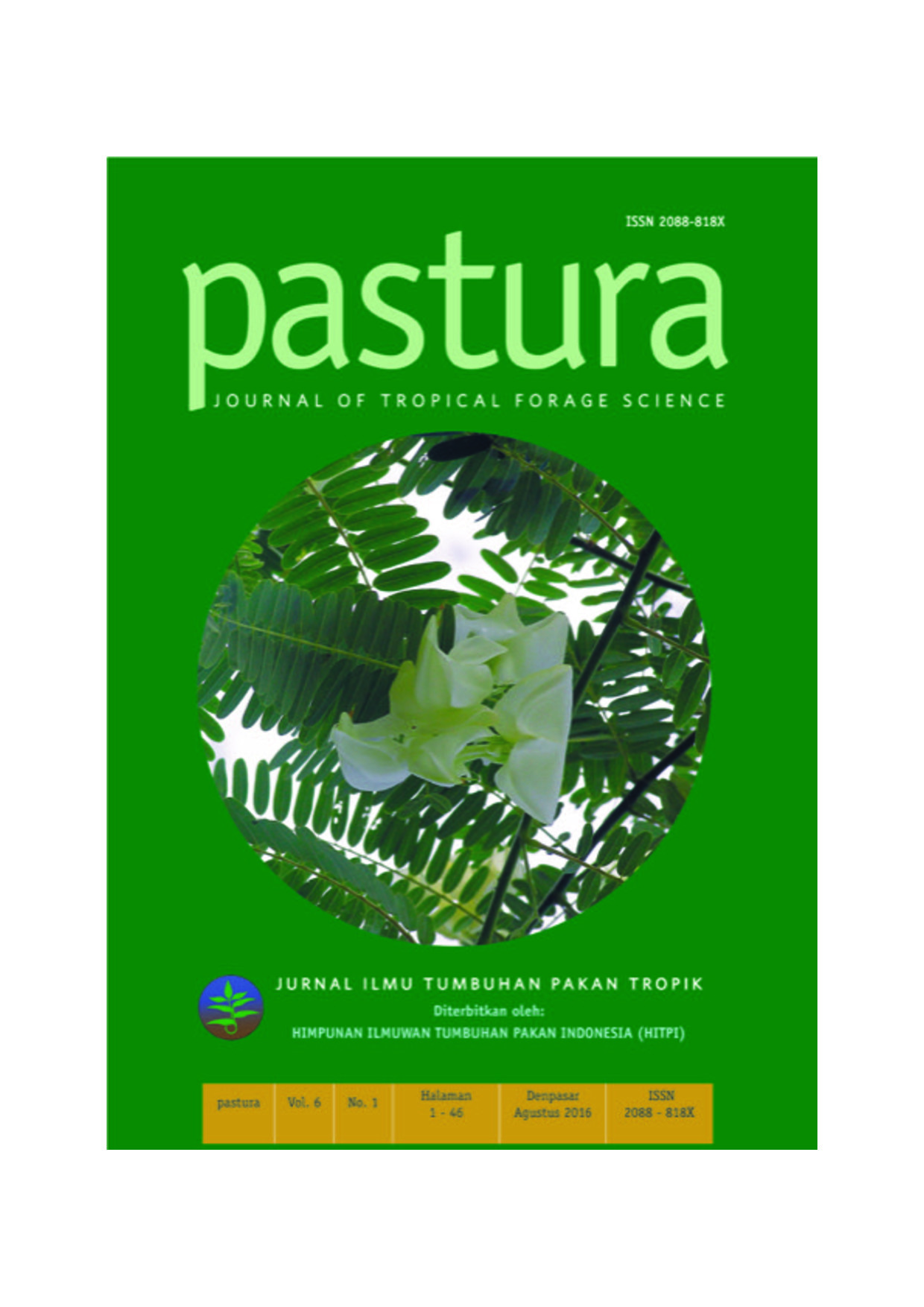FENOMENA TANAMAN GLIRISIDIA (Glyrisidia maculata) DI PANTAI PETANAHAN KABUPATEN KEBUMEN
Abstract
In order to achieve sustainable prosperity of human being, some support factors are needed, one of which is the fullfilment of animal protein requirement. One of the producers of animal protein is ruminant whit its products in the forms of meat and milk. The main feedstuff for ruminant is forage that can be supplied in part, by Glyricidia (Glyrisidia maculata), Petanahan a sub-district, coastal area of Kebumen, is one of the locations where both tame or wild Glyricidia (Glyrisidia maculata) flowishers. To know the condition of Glyricidia (Glyrisidia maculata) that grow in coastal area, a study was conducted. Survey method was employed in this research as the study of naturalistic paradigm. The study use phenomenology as its principts. The observed phenomena were the Glyricidia (Glyrisidia maculata) growth ang its utilization potential for human life. The results of this research showed that Glyricidia (Glyrisidia maculata) able to grow on coastal area up to the distance of 150 meters from the brime of coastal on the sandyland, it withsands drought. The leaves of Glyricidias (Glyrisidia maculata) are still green, the plants bear flowers and peas during dry seasons, and they can supports the life of 400 adult goats that lived in village of Tegalretno, Petanahan sub- district, the district of Kebumen.
Keywords : Phenomenon, Glyricidia (Glyrisidia maculata), sandy soil and goat.





